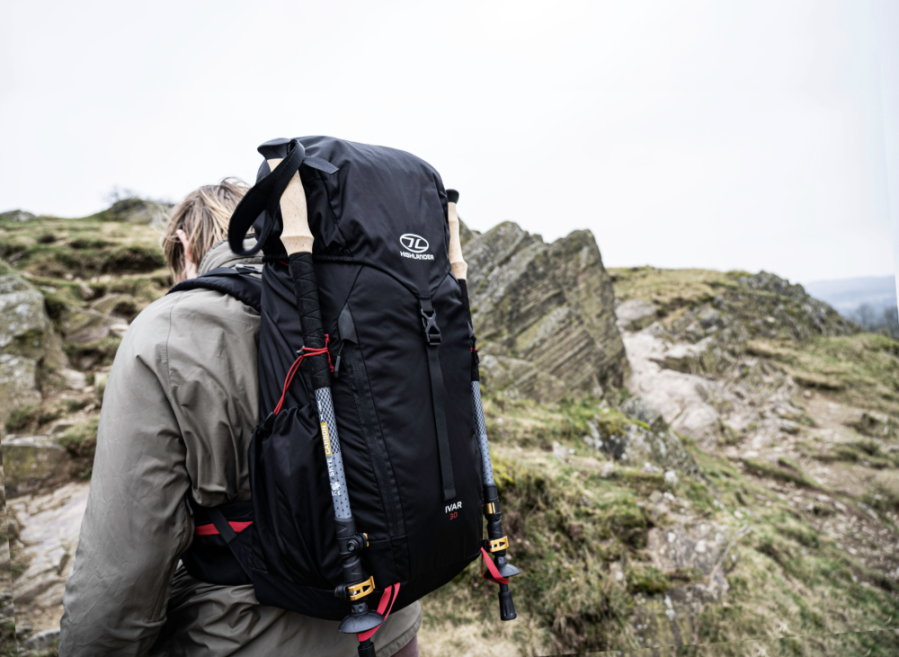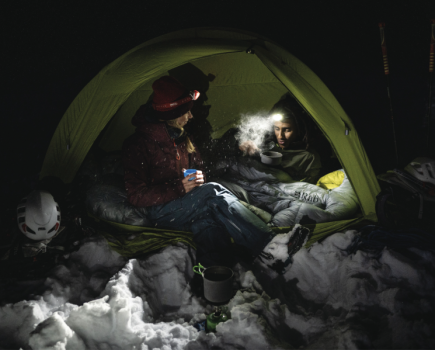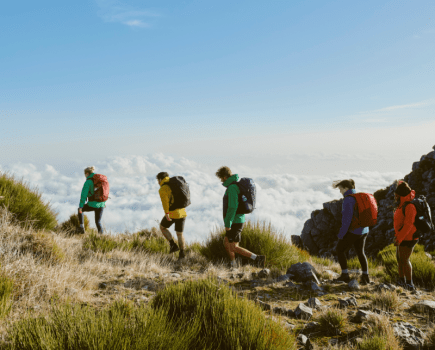A good hiking backpack is an essential part of your hiking gear when day walking. It is possible to spend a great deal on a daypack, but it isn’t necessary. There are many excellent models that are accessible for those on a budget. Here, Lara Dunn and Peter Macfarlane look at a selection of the best budget hiking backpacks, generally with capacities of 20-30 litres that should hold all you need for a day out.
Main image: Carry that weight for less | Credit: Highlander
The pack should be a good size for its intended use (volumes vary enormously!) and be stable and comfortable over many hours. A range of pockets and storage is handy to keep things – well, handy. The dream is a pack you forget about, no matter how challenging the trail and cumbersome the load. At the least, it shouldn’t actively interfere with the enjoyment of the hike. Stability is crucial when load carrying or for more technical trails, climbs and scrambles, making the harness shape and configuration a key personal factor to get right.
Straps – both shoulder and hip – need to be shaped and padded to suit the individual build of the wearer. Do women always need a women’s specific pack? Not always… but the reality is that for many ‘average build’ women, a female specific pack offers an easier and quicker-fix fit. Women’s specific packs are tuned to accommodate hips and busts.
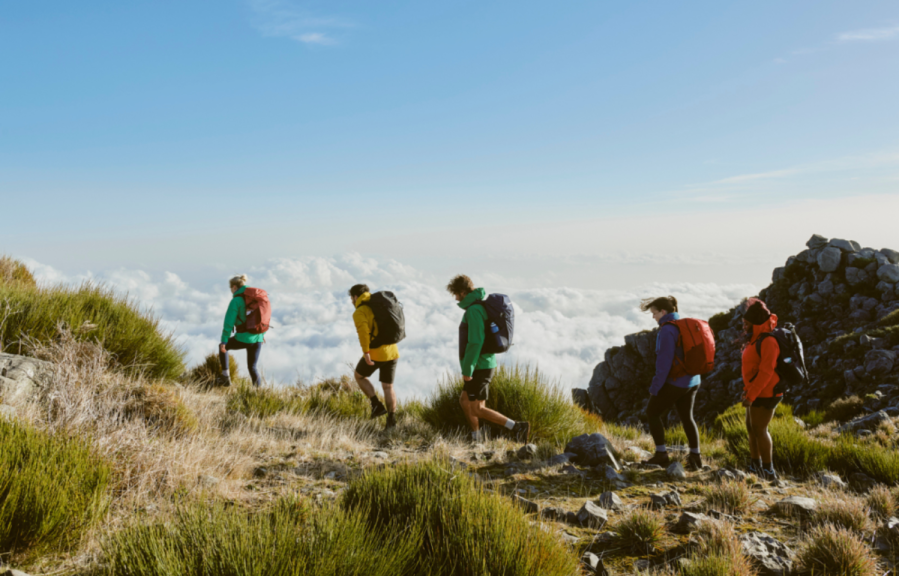
While it is possible to spend a great deal on a daypack, mid-sized or backpacking/trekking pack, it doesn’t necessarily have to be that way. For those whose budget is more modest, there are plenty of options that shouldn’t break the bank and will still deliver the functionality required across a range of sizes. Genuinely women’s specific packs unfortunately rarely sit at the budget end of the spectrum, but more affordable options are available from reputable companies, as tested.
Why you can trust The Great Outdoors
The Great Outdoors is here to help you make the most of your time outside. We have been helping people to explore from sea to summit, valley to mountain top for over 40 years. Our gear tests remain completely impartial. If you are wary of websites that only review brands that advertise with them, or sceptical of social media accounts always singing the praises of their latest freebie, you’ve come to the right place! Our reviews rank #1 for rigour, trustworthiness, and independence, and our gear testing team is the most experienced in Britain. With over 200 years’ experience between us, we are professional mountain leaders and instructors, wildlife photographers and rangers, outdoor authors, guidebook writers and trail addicts.
Our pick of the best budget backpacks for hiking
Lara Dunn and Peter Macfarlane put the best budget backpacks for hiking to the test, with additional testing from John Manning.
| Quick List |
|---|
| Best overall: Vaude Skomer 24 (available from Walmart) |
| Best for comfort: Lowe Alpine Airzone Active ND25 (available from Cotswold Outdoor) |
| Greener choice: Berghaus W Remote Hike 23 (available from Berghaus) |
| Best value: Highlander Ivar 30 (available from Highlander Outdoor) |
Best overall
Vaude Skomer 24
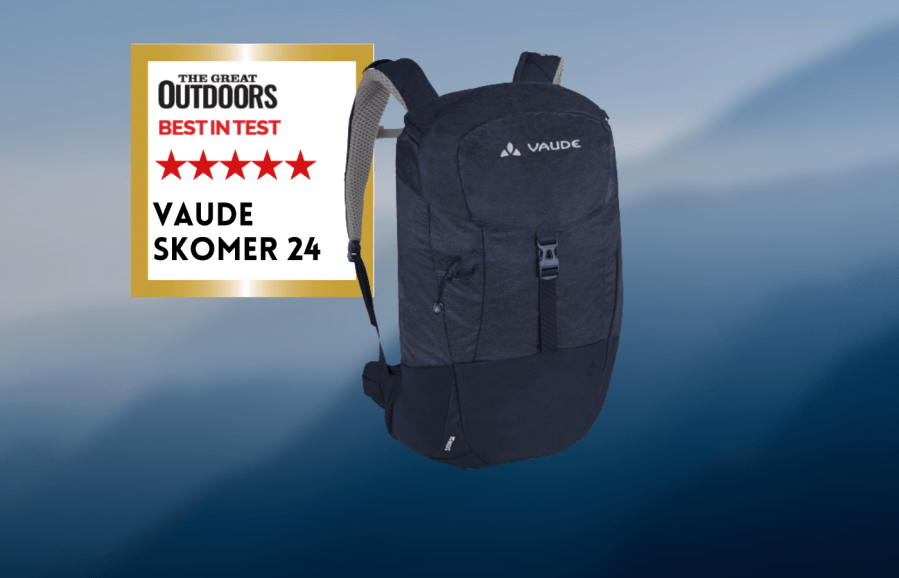
Lara Dunn’s Best in Test
The Skomer 24 is a well-designed, practical, and stable daypack that meets the needs of a demanding female hiker at a reasonable price.- Attention to detail
- Comfort
- Fit
- Environmental credentials
- No real padding at hip belt
- bottle holder pocket quite large
| Quick specs | |
|---|---|
| Price | $88.99 / £111.95 (available from Walmart) |
| Weight | 894g (including optional waterproof cover)/818g (without cover) |
| Materials | 200D/320D 67% Polyamide/33% Polyester (uses recycled polyester yarns); PFC-free DWR |
| Features | single walking pole attachment, hydration bladder compatible, sternum strap, padded straps, detachable rain cover. |
| Sizes | 24 litres |
| Men’s version | No men’s version but Men’s Jura 24 is similar although not identical |
| Brand Site | www.vaude.com |
Lara Dunn says: The Skomer 24 is a budget daypack that is well-designed to meet the needs of a demanding female hiker. Available in four colours and three different sizes, it comes in a teardrop shape with a main compartment, internal drawstring, flap lid, and zipped pocket inside. The bag also has a hydration pack pocket and a stretch mesh pocket for a bottle.
The padded shoulder straps and back system are designed to accommodate various bust shapes and sizes, with adjustable height chest straps and a framed back system to prevent sweating. The Skomer 24 is stable and comfortable on the hill, with ample space for a lightweight waterproof jacket, warm layer, hat, gloves, packed lunch, and other items.
The pack is made from tough fabric made from recycled PET bottles and is built to last. The outside is treated with an environmentally friendly water and stain resistant finish, working well with the lid design to keep contents dry.
In summary, the Skomer 24 is a well-designed, practical, and stable daypack that meets the needs of a demanding female hiker at a reasonable price. It comes in four colour options and three sizes, including the 24 litre variant, and is made from recycled PET bottles for durability.
Read more: Vaude Skomer 24 review
Highlander Ivar 30
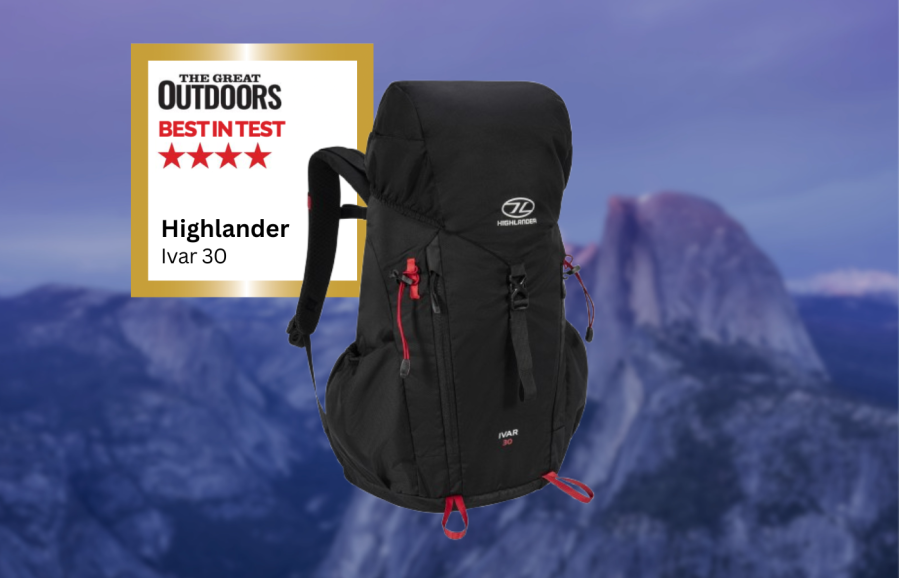
Peter Macfarlane’s Best in Test
The weight is a little high and the back is a little short, but if it fits you the Ivar is a fully specc’ed mountain pack at an entry level price.- very well-featured
- all-season compatibility
- no compression
- weight
- short back
| Quick specs |
|---|
| RRP: $67 / £49.99 (available from Highlander Outdoor) Weight: 1080g Capacity: 30 litres Materials: 100% Nylon, reinforced XPT Back system: Airvent back system Pockets: single buckle lid closure, bottle pockets, zipped internal access, lid and front pockets Features: axe/pole loops, rain cover, hydration hose compatible Sizes: one Men’s version? yes highlander-outdoor.com |
The main compartment is draw-stringed and accessed via a single buckled closure lid which has a good sized zipped external pocket with a key clip inside. The main compartment has a hydration sleeve with a hanging loop and easy exit route for the tube. The compartment also has a long external vertical zip giving great access without having to open the lid. A rare feature, and one I enjoy.
On the opposite side of the front panel is large, zipped pocket, big enough for insulated mitts and more. There are axe axe/pole attachments and loops, and large bottle pockets on the sides.
The harness is excellent, well-shaped and padded with a sliding chest strap and a whistle buckle. The hip belt has padded fins with handy zipped pockets. The air vent back system allows for a close, stable fit but a wide central channel and very open mesh and chambered padding do a decent job of keeping the back ventilated. There are no compression straps but the sturdy fabric and stiffened insert keep the pack in shape even where nearly empty. The weight is a little high and the back is a little short, but if it fits you the Ivar is a fully specc’ed mountain pack at an entry level price.
Read more: Peter Macfarlane’s full Highlander Ivar 30 review
Best for comfort
Lowe Alpine Airzone Active ND25
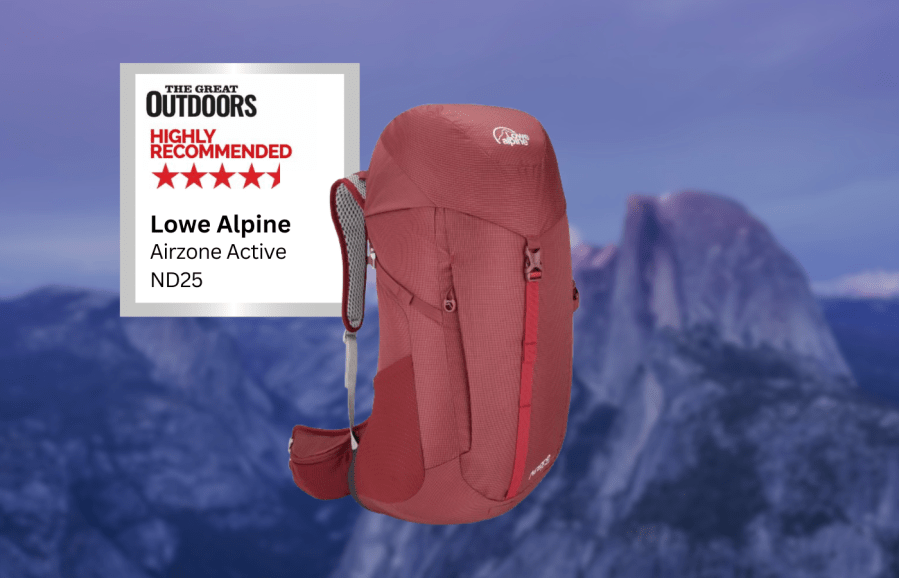
Lara Dunn recommends
The AirZone Active ND25 is designed to be a fully featured but lightweight pack, well suited to warmer conditions thanks to its ventilated back system, hydration bladder compatibility and its twin mes- streamlined shape
- comfortable fit
- well-featured
- narrower shape tends towards top heavy
| Quick specs |
|---|
| RRP: $124.95 / £100 (available from Cotswold Outdoor) Weight: 925g (including raincover) Capacity: 25 litres Materials: Woven mini Ripstop (50% recycled) nylon with PFC-free DWR Back system: AirZone LT back system Pockets: interior and exterior zipped lid pocket, hip belt pockets, front zipped pocket, stretch mesh side pouch pockets Features: Trekking pole loops, hydration system compatible, removable rain cover, LED light loop, sternum strap with whistle Sizes: one (non-narrow dimensions available) Men’s version? unisex www.lowealpine.com |
The AirZone Active ND25 is designed to be a fully featured but lightweight pack, well suited to warmer conditions thanks to its ventilated back system, hydration bladder compatibility and its twin mesh water bottle holders. The lightweight but well-padded harness system is easy to adjust and gives a highly comfortable fit.
Thanks to broad but pliable hip pads – with handy hip belt pockets – the fit is secure, stable and poses no risk of discomfort for women. The shoulder straps are shaped such that they curve around the bust nicely, too. At 25 litres, this isn’t an overly generous pack and it’s very easy to fill up for a day hike, particularly one where variable weather is expected.
Thankfully, there are plenty of pockets inside and out, in which to keep extras tidied away so they’re easy to access. With its narrow shape, some care to weight distribution is needed when packing, as it is easy to make the pack feel somewhat top heavy if fully laden. That said, it’s a stable pack and there’s no swinging about even when fully loaded.
Read more: Lara’s full Lowe Alpine AirZone Active ND25 review
Osprey Hikelite 26

Lara Dunn’s verdict
The Hikelite 26 is a budget-friendly unisex pack from Osprey, priced fairly at £100 for numerous features on offer.- Light
- Stable
- Comfy
- Short waist strap
- zip-top opening makes rain cover crucial in bad weather
| Quick specs | |
|---|---|
| Price | £100 |
| Weight | 823g (including optional waterproof cover)/761g (without cover) |
| Materials | Bluesign approved 100% recycled 100D high tenacity bird-eye nylon; PFC-free DWR |
| Features | walking pole attachments, hydration bladder compatible, sternum strap with whistle, padded straps, detachable rain cover. |
| Sizes | 24 litres |
| Versions | Unisex |
Lara Dunn says: The Hikelite 26 is a budget-friendly unisex pack from Osprey, priced at £100. It is a genuine unisex model with features that work well with the female form, making it a suitable choice for hikers. With a 26 litre capacity, it can carry most essentials for a day out in the hills, but is not as spacious as the smaller capacity Vaude Skomer 24. The pack has a zip-top opening instead of a lid and clip closure.
The Osprey has numerous pockets, including a zipped valuables/sunglasses pocket, two stretch mesh side pockets, and a versatile front patch pocket. It also features two trekking pole loops for easy pole storage. The removable rain cover is water-resistant and fits neatly into a zipped pocket at the bottom.
The shoulder straps are broad, soft, and cushioned to avoid digging into soft bust tissue. The ventilated back system prevents overheating and is low profile, ensuring stability in wear. However, the detachable waist strap is not long, making it unsuitable for larger hikers. The zipped access at the top makes it easier for rain to enter during sudden downpours. Despite these minor issues, the Hikelite 26 is a comfortable and capable pack.
Read more: Osprey Hikelite 26 review
Greener Choice
Berghaus W Remote Hike 23
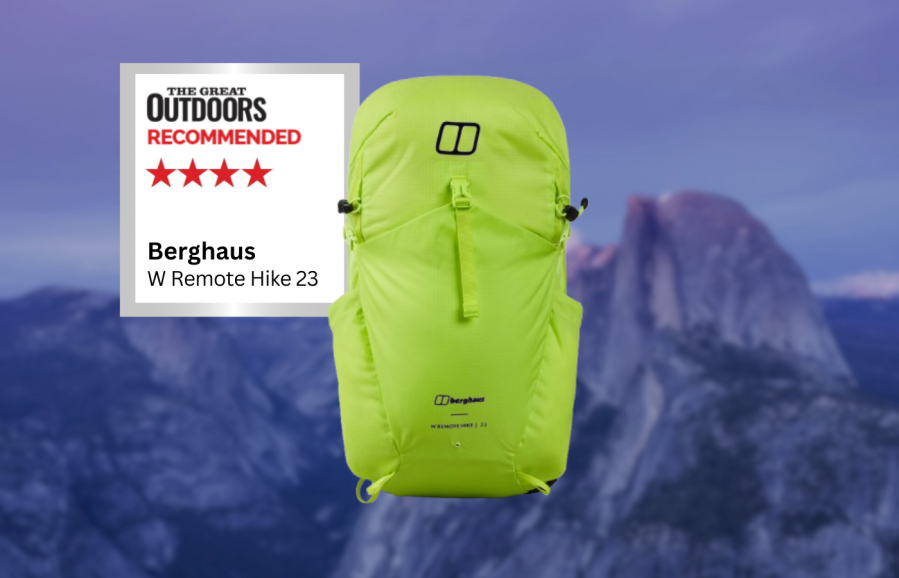
Lara Dunn’s Greener Choice
There’s a feel of a trail running or mountain marathon pack to this, but it’s sturdy and sizeable enough to really excel as a hiking or scrambling daypack.- slimline shape
- good airflow
- lightweight
- handy pockets
- sustainable nylon
- replaceable waist belt
- firm at base of back plate
| Quick specs |
|---|
| RRP: $148 / £110 (available from Berghaus) Weight: 983g Capacity: 25 litres Materials: 100% Seawastex nylon – made from recycled ocean waste Back system: Freeflow technology back system Pockets: front stash pocket, expandable side pouch pockets, exterior zipped top pocket, hip belt pockets, two stretch mesh harness pockets Features: women’s specific fit, trekking pole loops, hydration system compatible Sizes: one Men’s version? yes www.berghaus.com |
A shade over the £100 limit we set ourselves, the Berghaus W Remote Hike 23 still offers a more wallet-friendly option than many packs of a similar size and offers good functionality and an array of features including Berghaus’ Freeflow technology which has previously featured on pricier packs. This harness system is light and subtly contoured, giving good levels of air ventilation without impacting on the stability of the pack.
The waist belt is an innovative design, with the buckle at the side, that means the webbing belt section is straightforward to replace, something that aids longevity, but more interestingly, to the accessibility of the pack in terms of body shapes it can accommodate. If needed, a longer 43mm strap can be bought for very little and easily subbed in to create a longer waist belt.
The pack is hydration system compatible and there are plenty of pockets around the bag, and the front pouch pocket and side expandable pockets are unusual but effective in design. It’s a pretty low volume pack but the main storage area is open and it’s therefore easy to use. Stretch mesh pockets on each shoulder strap take a moderate sized smartphone or snacks, keeping bits and pieces to hand, as do the pockets on the hip belt.
Read more: Lara Dunn’s full Berghaus W Remote Hike 23 review
Vango Hex Rolltop 25l
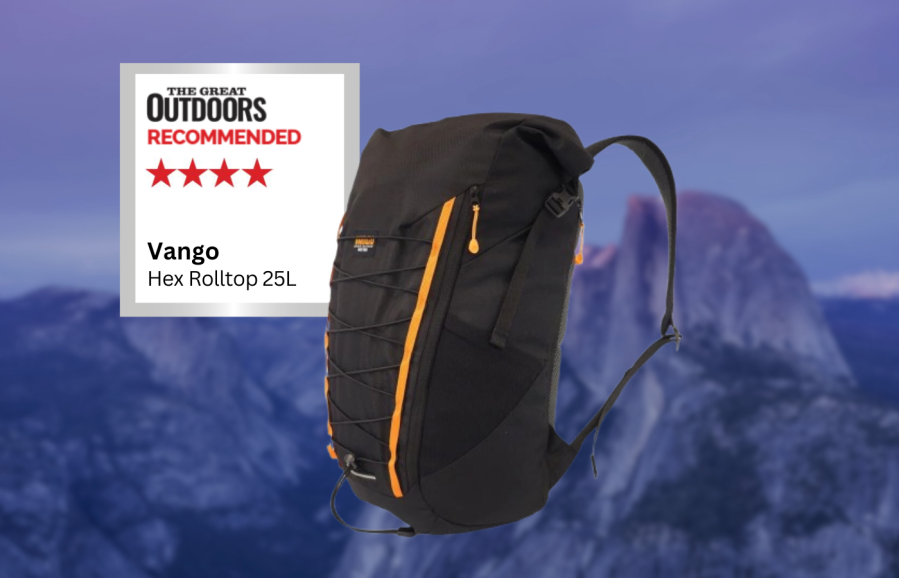
Peter Macfarlane recommends
The Hex is basic but functional, inexpensive and made with a tough fabric, all of which make it a great first pack.- simple and effective
- cheap
- no chest or waist strap
| Quick specs |
|---|
| RRP: $54 / £40 Weight: 620g Capacity: 25 litres Materials: Excel Eco 600D – Recycled 600 Denier yarn, back coated with PU, 250D polyester triangle ripstop Pockets: roll top closure, external zipped pockets, laptop sleeve Features: bungee attachment panel, daisy chains, reflective detailing, padded back Sizes: one Men’s version? unisex vango.co.uk |
The Vango Hex Rolltop 25l is a multi-use pack and would work as a commuter bag and a schoolbag as well as outdoors, so you’re not splashing out on expensive kit that’s designed only for use in the hills. This approach means a few compromises on the features but good design choices mean I haven’t found the pack lacking too much on hill days. The padded back is comfortable, even when fully loaded – there is double padding because of a laptop sleeve with side zip access.
The shoulder straps are well shaped, comfortable and secure with light padding and reflective detailing. There is no chest strap, but the Hex does sit well without it. You can add an aftermarket chest strap for less than £10 but it does take the shine off the very low price. Also missing is a waist strap – which I haven’t missed – the wide contact area against my back and the good shoulder straps mean it’s very stable without.
The rolltop closure is excellent and simple to use with buckles at either side. The consequent lack of a lid pocket is countered by a large, zipped pocket on the body which has a further internal zipped pocket and also has handy storage dividers. There is bungee webbing on the front which takes wet clothing and trekking poles. There are also vertical daisy chains to which I attached ice axe loops, allowing me carry winter gear.
Read more: Peter’s full Vango Hex Rolltop review
Berghaus Arrow 30
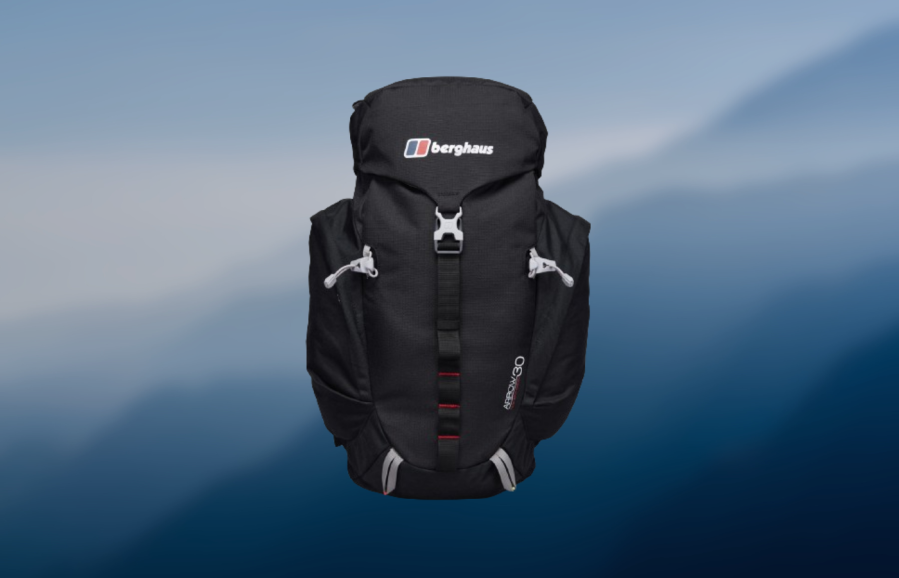
John Manning’s verdict
A tough traditional pack, well-made from robust fabric, that should serve for many years.- Heavy Duty
- Zipped side pockets
- Single buckle pack entry
- Removable/replaceable rain cover
- warm back system
- pockets inaccessible while wearing pack
- fiddly sternum adjustment, no above-shoulder strap adjustment
| Quick specs | |
|---|---|
| Price | £85 / $95.99 |
| Weight | 760g stated/739g on JM’s scales |
| Materials | pack – PFC-free, 100% recycled 150D & 600D polyester fabrics with water-resistant PU treatment; rain cover – PFC-free, 100% recycled 70D nylon |
| Features | Berghaus Flow back system; detachable/replaceable rain cover; trekking pole attachments; hydration system compatible; key clip in large, single lid pocket; adjustable sternum strap; ice axe attachment points |
| Size | 30-Litre |
| Women/men’s version | unisex |
| Brand site | www.berghaus.com |
John Manning says: The Arrow 30 pack is a durable, traditional pack made from robust fabric, designed to hold various gear and provide a comfortable carry. It features zipped side pockets for storing essentials, a single lid pocket for accessories, and a 600D polyester main body and 150D fabric snow/rain collar. The pack also includes a key clip, pole attachments, and a removable rain cover made from PFC-free recycled 70D nylon.
The Arrow 30 is hydration bladder compatible, with a single back-of-the-neck hose port and a single Velcro loop suspended within an internal sleeve. The generous waist belt tightens effectively, but the sternum strap is fiddly to adjust. Shoulder strap lengths are adjustable, but there is no fine tuning available above the shoulders.
Berghaus’s Flow back system consists of two parallel, vertical, vented foam pads, designed to keep the pack away from the back while allowing airflow to dissipate condensing sweat. However, the pack can become sweaty on steep ascents and cause discomfort when removed, making it less effective than a sprung system that suspends the pack an inch or more away.
Read more: Berghaus Arrow 30 review
Vango Apex Air 30
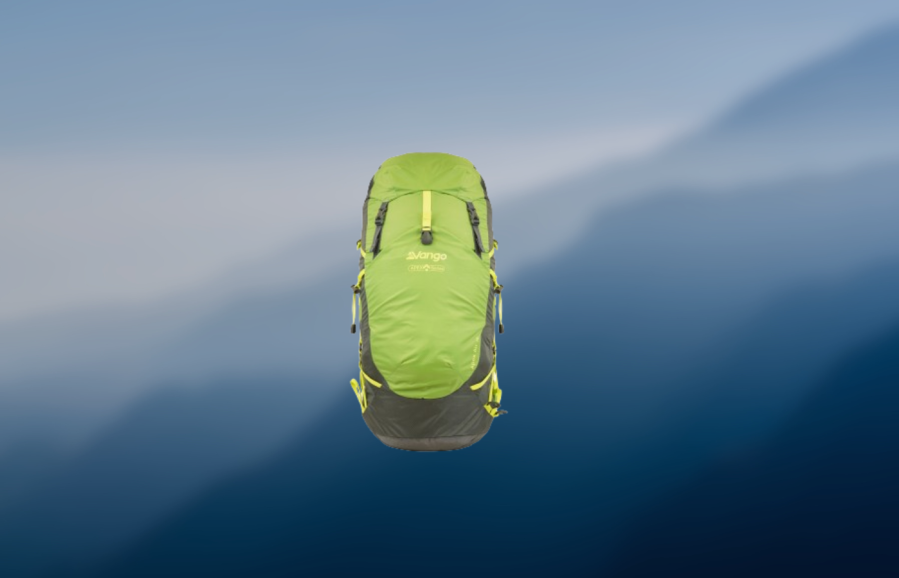
John Manning’s Verdict
A great option for those seeking the advantages of a backpack in daypack size.- Airy back system
- Removable/replaceable rain cover
- Fully adjustable shoulder straps
- Compression straps seem redundant
- Weight
| Quick specs | |
|---|---|
| Price | £100 |
| Weight | 980g stated/1038g on JM’s scales |
| Materials | Excel 200D RS fabric, 6mm alloy frame |
| Features | X-Air UL back system; detachable/replaceable rain cover; trekking pole attachments; hydration system compatible; adjustable sternum strap with whistle; side compression straps; large front and side mesh pockets; two lid pockets; ice axe attachment points |
| Sizes | 30L, 40L |
| Version | Unisex |
| Brand site | www.vango.co.uk |
The Apex Air 30 is a small, multi-day backpack with features reminiscent of larger, multi-day packs. It features a well-sized front storage pocket, stretchy mesh side and front pockets, a deep capacity-boosting snow collar, fine-tunable shoulder straps, hip fin pockets, and compression straps. The pack is also hydration system compatible with a hose port behind each shoulder and two Velcro loops to suspend a bladder within an internal sleeve.
The pack has a light mesh hip belt, better-distributing the load and comfortable in use. Each fin has an easily reached pocket, perfect for keeping keys, trail mix, notebooks, and pens in reach. The sternum strap is easily slide-adjusted and features an emergency whistle.
The X-Air UL Back System consists of a stretchy mesh panel suspended from the pack on a 6mm alloy frame, allowing plenty of air circulation to prevent sweat condensing on the back. Vango’s own PU-coated nylon is used to keep the pack’s weight down, while the base fabric feels heavier duty.
The rain cover is anchored by an elasticated strap within a zipped pocket on the base of the pack, making it easier to replace if they ever come a cropper. The pack is designed to be lightweight and comfortable for long-distance travel.
Mountain Warehouse Pace 30L
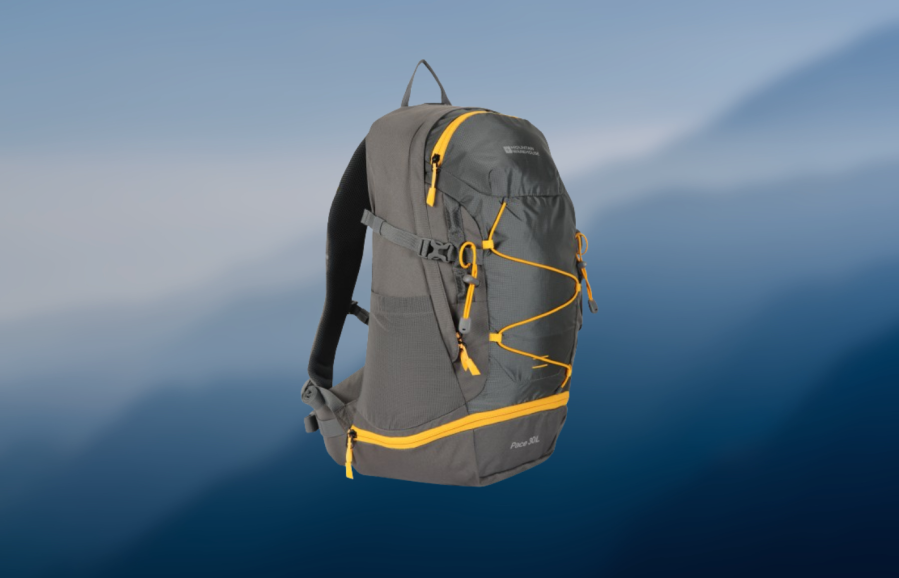
John Manning’s verdict
Great for carrying smaller loads in comfort on a budget- Price
- Lots of features
- Over-specified
- Limited volume
- Intrusive front pocket
| Quick specs | |
|---|---|
| Price | £70 |
| Weight | 854g stated/870g on JM’s scales |
| Materials | polyester; ripstop front panel |
| Features | Air Flow Back System; detachable/replaceable rain cover; hydration system compatible; adjustable sternum strap; waist belt; single fin pocket; stretch side pockets; trekking pole attachments; bungee cord gear attachment; side compression straps; ice axe attachment points |
| Sizes | 12L/20L/30L |
| Versions | Unisex |
| Brand Site | www.mountainwarehouse.com |
Mountain Warehouse’s Pace 30L is a budget-friendly kit that offers a detachable/replaceable rain cover, compression straps, stretch side pockets, hydration system compatibility, and numerous attachment points. The pack is accessible via a wraparound zip or a zippered base compartment that can be joined internally with the main pack bag. However, the Pace has limited room for kit, with no snow collar to boost capacity and a small front pocket that only holds hat, scarf, gloves, compass, and whistle accessories. The small waist belt pocket is hard to reach, and external attachment points like the bungee cord don’t feel secure.
The Air Flow back system, an alloy frame-suspended mesh, is designed to keep the main pack bag off the back, allowing air circulation to shift sweat away. However, the thin and light frame is easily distorted by the pack’s contents, compromising its effectiveness. Compression straps seem superfluous on smaller packs and serve little purpose in this pack. Despite the lack of shoulder strap adjustment and the under-effective Air Flow back system, the Pace 30L is a comfortable carry option.
How we test
Lara Dunn used the packs in winter and spring conditions on a variety of walks in the Malvern Hills, Brecon Beacons and Black Mountains. She is 5’5” tall with a relatively short back length in relation to her height.
Peter Macfarlane used the packs on big hill days from autumn to spring and on his frequent traverses of the Kilpatrick Hills where he’s based as a reserve ranger. He’s 5’9” and has a back length ‘between regular and long’ depending on the pack.
How to fit a backpack
To find the right fit packs should be tried on fully loaded. It’s worth taking time to do this. A comfortable pack makes a huge difference to the enjoyment of a backpacking trip. Most packs come with specific fitting instructions and it’s always worth following these.
The key for the correct fit is the length of your back, measured from the base of the neck to the upper hipbone (technically from the seventh cervical vertebra to the top of the iliac crest). Having someone measure your back length with a flexible tape measure is the best way to find this. Your actual height is not important – some people have long legs and short backs, other have short legs and long backs.
Learn more about how to fit a backpack.
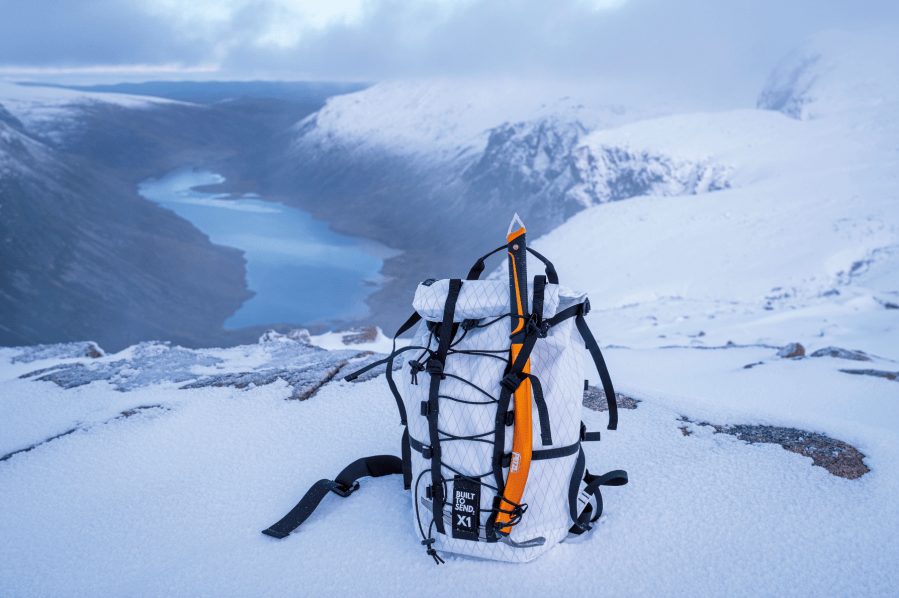
How to pack a daypack
The most important principle is to ensure that the loaded pack is comfortable to carry by distributing the weight evenly. This may not matter so much for shorter walks. But for longer trips, when both your mileage and the weight on your back increase significantly, it starts to become a major factor in overall trail happiness.
The second thing to bear in mind is that you’ll want easy access to items you’ll need regularly, or in an emergency situation. In the first instance, this means being able to scoff a snack or swig from your water bottle without needing to empty out half your pack’s contents. Similarly, if the wind picks up or the heavens open, you’ll want to be able to grab extra layers (like your waterproofs) quickly and easily. The same applies in an emergency scenario. Hopefully, this won’t be anything too dramatic. But if you need a blister plaster, it helps if your first aid kit is within easy reach.
As long as you follow those main principles, you won’t go too far wrong. So, despite what many outdoor websites will tell you, there isn’t really one definitive ‘right way’ to learn how to pack a backpack. At the end of the day, it’s your pack and your back, and you’ll invariably find a system that works for you. Exactly where everything should be placed becomes largely a matter of personal preference.
Learn more about how to pack a daypack.

Can I make my backpack waterproof?
Most hiking backpacks are not waterproof. Although the fabric usually is, the seams, stitching and zips are not. Sealing these is complex and expensive. There are waterproof backpacks available from companies like OverBoard made from tougher, more puncture-resistant fabrics than ordinary backpacks. These have basic designs and are really drybags with shoulder straps and a few external features. For activities where getting your backpack soaked or even immersed is a real risk – canyoning, kayaking, pack rafting – such packs may be worthwhile. However, for most uses they’re overkill.
However, there are several ways to keep the contents of a standard backpack dry. All of them have advantages and disadvantages. For water-sensitive items like electronics and down sleeping bags and clothing it’s worth using more than one.
Many backpacks come supplied with pack covers, usually stored in a zipped compartment in the base. These are made from waterproof fabric and are shaped to fit over the pack. Pack covers can be bought separately in different sizes for packs that don’t come with them. They should have elasticated edges or adjustable drawcords so they can be closed tightly around the pack.
Rather than put a cover over your pack you can line the inside with a large waterproof bag – or a pack liner. This can be as simple as a heavy-duty bin bag. These are cheap and effective until they tear, which they do quite quickly. Purpose-made pack liners and ones designed for rubble or garden waste are much tougher.
Perhaps the best but most costly solution is to pack your bag with lightweight drybags. They have taped seams and roll tops come in a large range of sizes. With a selection of these, you can pack items separately. So nothing is exposed to the rain that doesn’t need to be when you open the pack to get something. A large drybag can also be used to line the whole pack. The only disadvantages of drybags are the need to remember what’s in each bag (different colours help and some are available with clear sections) and the cost.
Learn more about how to keep your belongings dry on the trail.

